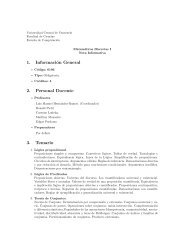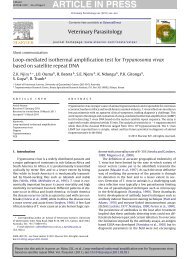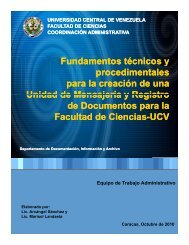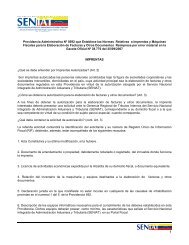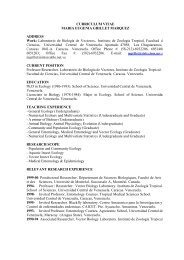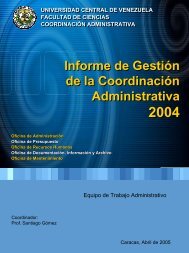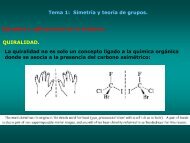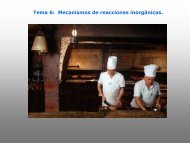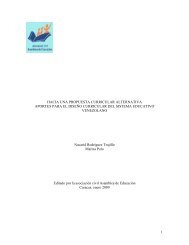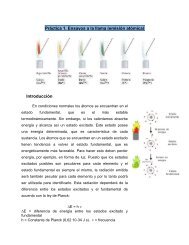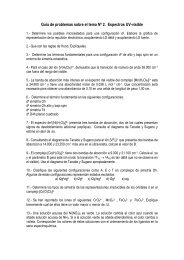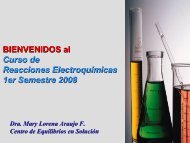Collecting and Preserving
Collecting and Preserving
Collecting and Preserving
- No tags were found...
Create successful ePaper yourself
Turn your PDF publications into a flip-book with our unique Google optimized e-Paper software.
pulled, a spring-loaded canopy is snapped over an area ofsoil, <strong>and</strong> insects within the canopy are collected by suctionor a vacuum device. This trap was designed for use ingrassl<strong>and</strong>s.1.10.13 Artificial RefugesMany insects, especially beetles, are successfullyfound under stones, planks, or rotten logs. Providing suchrefuges, as pieces of wood, card board, or even complextraps, is also a form of trapping. Lepidoptera larvae, forexample, will congregate under burlap tied in a b<strong>and</strong>around the trunks of trees. This technique has even beenused to help control some pest species such as the gypsymoth.References: Campion 1972; Shubeck 1976.1.10.14 Electrical Grid TrapsIn recent years, electrocuting pest insects has beenused extensively in control work. The insects are attractedto a device by a pheromone or other lure placed in achamber protected by a strongly charged electrical grid.The method deserves study for other purposes, such assurveying the arthropod fauna of an area.References: Goodenough & Snow 1973; Hartstack etal. 1968; Mitchell et al. 1972, 1973, 1974; Rogers & Smith1977; Stanley et al. 1977.Techniques <strong>and</strong> Toolsbait. Natural products, chemicals derived therefrom orsynthesized, <strong>and</strong> secretions of the insects themselves mayall be used as attractants. Mere exposure of the substancemay be considered as setting up a trap, <strong>and</strong> attractivesubstances are used in many constructed traps.Sugaring for moths, one of the oldest collectingmethods, involves the use of a specially prepared bait inwhich some form of sugar is an essential component.The bait may be refined or brown sugar, molasses, orsirup. Such substances often are mixed with stale beer,fermented peaches, bananas, or some other fruit— there isno st<strong>and</strong>ard formula. Each lepidopterist has his or her ownfavorite recipe.One particularly satisfactory recipe uses fresh, ripepeaches; culls or windfalls are suitable. Remove the seedsbut not the skins, mash the fruit, then place it in a 4-liter(1-gal) or larger container of plastic, glass, stainless steel,enamelware, or crockery with a snugly fitting but not tightcover. Avoid using metal containers that may rust orcorrode. Fill each container only onehalf to two-thirds fullto allow space for expansion. Add about a cup of sugar <strong>and</strong>place in a moderately warm place for the mixture toferment. The bubbling fermentation reaction should startin a day or so <strong>and</strong> may continue for 2 weeks or more,depending on the temperature. During this time, check thefermentation every day or every other day <strong>and</strong> add sugaruntil fermentation appears to have subsided completely. Asthe added sugar is converted to alcohol, the growth ofyeast slows <strong>and</strong> eventually ceases.1.11 Baits, Lures, <strong>and</strong> OtherAttractantsAny substance that attracts insects may be used as aFig. 15. AManitoba trap.After fermentation ceases, the bait should remainstable <strong>and</strong> should then be kept in tightly sealed containersto prevent contamination <strong>and</strong> evaporation. If the mixture isallowed to run low in sugar during the fermentationprocess, vinegar will be produced instead of alcohol. It istherefore important to smell the bait periodically <strong>and</strong> toadd plenty of sugar to avoid this. The amount of sugarconsumed will be surprising, usually over 0.4 kg per liter(3.3 lb per gal). The bait should have a sweet, fruity,winelike fragrance. A trace of vinegar is not objectionablebut is better avoided. Canned fruit, such as applesauce,may also be used to make the bait, but inasmuch as suchproducts are completely sterile, a small amount of yeastmust be added to start fermentation. Although the bait mayseem troublesome to prepare, it keeps for years <strong>and</strong> is thusavailable at any time, even when fruit is not in season.Immediately before use, the bait may be mixed with30 to 50 percent molasses or brown sugar or a mixture ofthese. This thickens the bait so that it will not dry out soquickly, <strong>and</strong> it makes the supply last longer.The best time to set out the sugar bait is in the earlyevening before dark. It may be applied with a paint brush19



